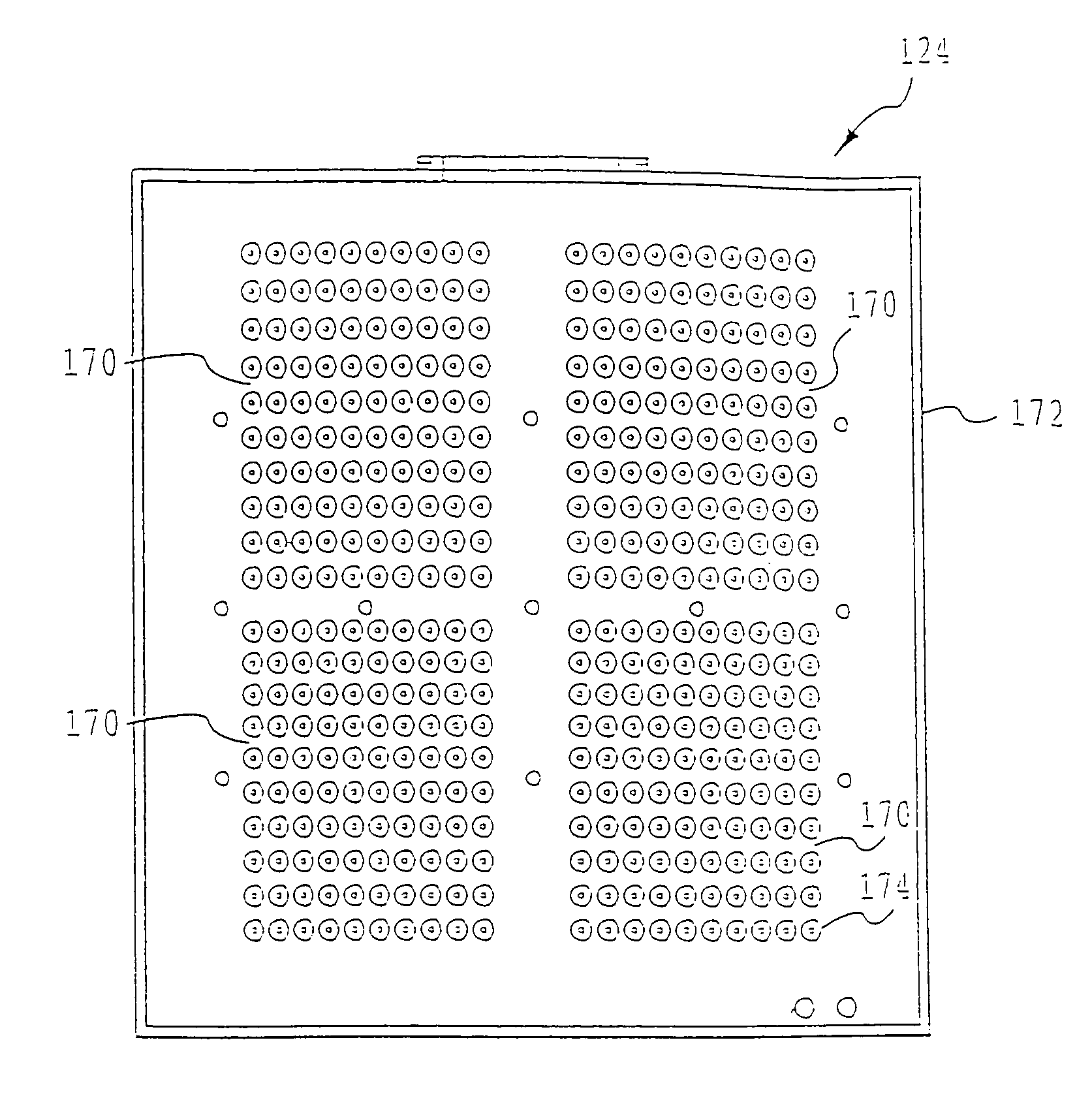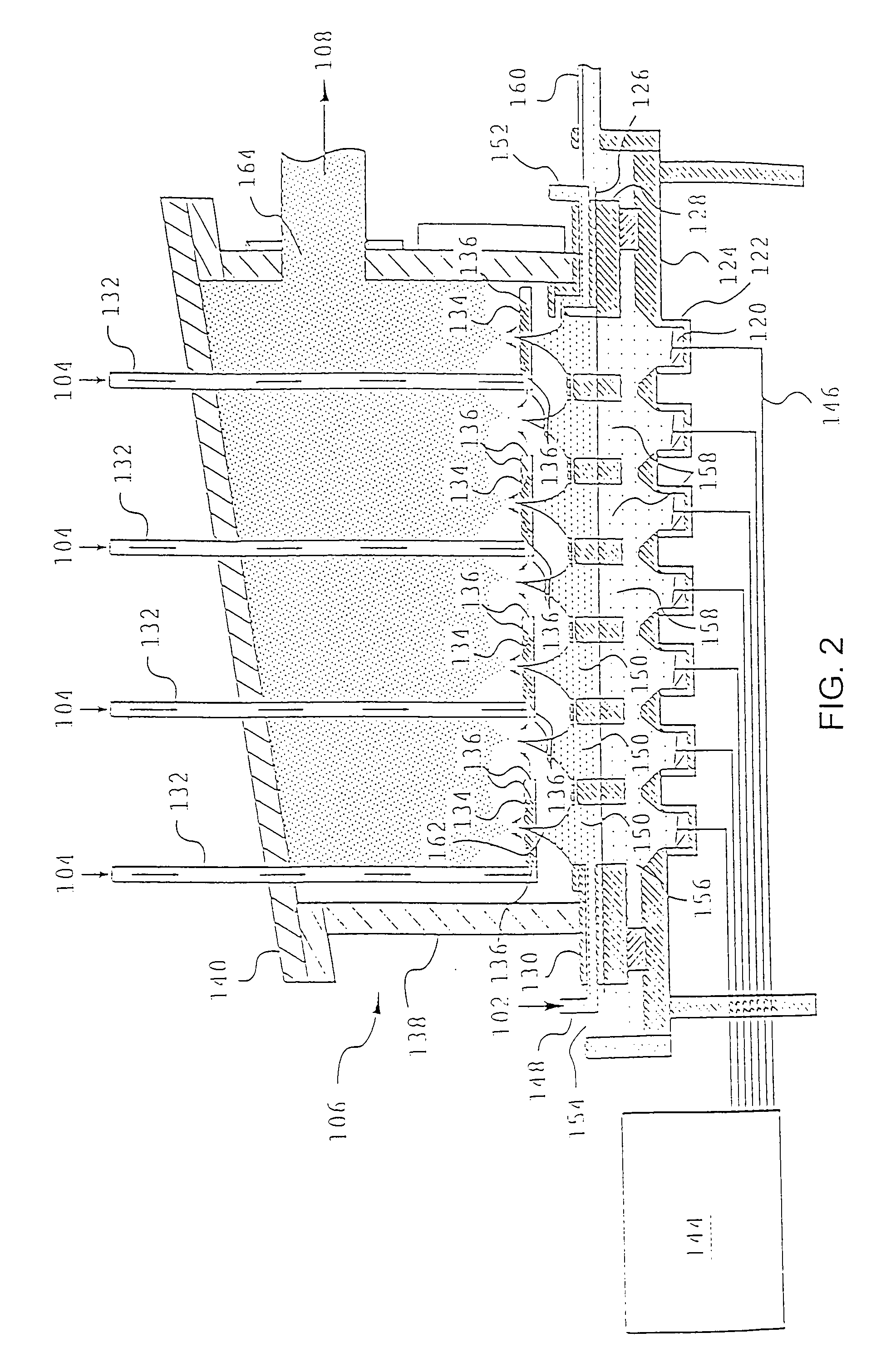Direct-write deposition of phosphor powders
a technology of phosphor powder and phosphor powder, which is applied in the field of direct-write deposition of phosphor powder, can solve the problems of no faster or more adaptable process for deposited phosphor powder, no known process that permits the rapid prototyping of new devices, and complicated production steps of the above-mentioned devices
- Summary
- Abstract
- Description
- Claims
- Application Information
AI Technical Summary
Benefits of technology
Problems solved by technology
Method used
Image
Examples
examples
[0258]The following example demonstrates the preparation of phosphor particles that are useful of the direct-write compositions according to the present invention.
[0259]1. Y2O3:Fu
[0260]A yttria powder batch was produced for use according to the present invention. An aqueous precursor solution was formed comprising yttrium nitrate and europium nitrate in a ratio to yield a phosphor comprising Y2O3 and 8.6 atomic percent Eu. The total precursor concentration was 7.5 weight percent based on the final product.
[0261]The liquid solution was atomized using ultrasonic transducers at a frequency of 1.6 MHz. Air was used as a carrier gas and the aerosol was carried through a tubular furnace having a temperature of 800° C. The total residence time in the furnace was about 1-2 seconds. The pyrolyzation at 800° C. resulted in intermediate precursor particles of a low crystallinity yttrium compound.
[0262]The intermediate precursor particles were then heated in batch mode at a temperature of 1400°...
PUM
| Property | Measurement | Unit |
|---|---|---|
| weight average particle size | aaaaa | aaaaa |
| viscosity | aaaaa | aaaaa |
| diameter | aaaaa | aaaaa |
Abstract
Description
Claims
Application Information
 Login to View More
Login to View More - R&D
- Intellectual Property
- Life Sciences
- Materials
- Tech Scout
- Unparalleled Data Quality
- Higher Quality Content
- 60% Fewer Hallucinations
Browse by: Latest US Patents, China's latest patents, Technical Efficacy Thesaurus, Application Domain, Technology Topic, Popular Technical Reports.
© 2025 PatSnap. All rights reserved.Legal|Privacy policy|Modern Slavery Act Transparency Statement|Sitemap|About US| Contact US: help@patsnap.com



